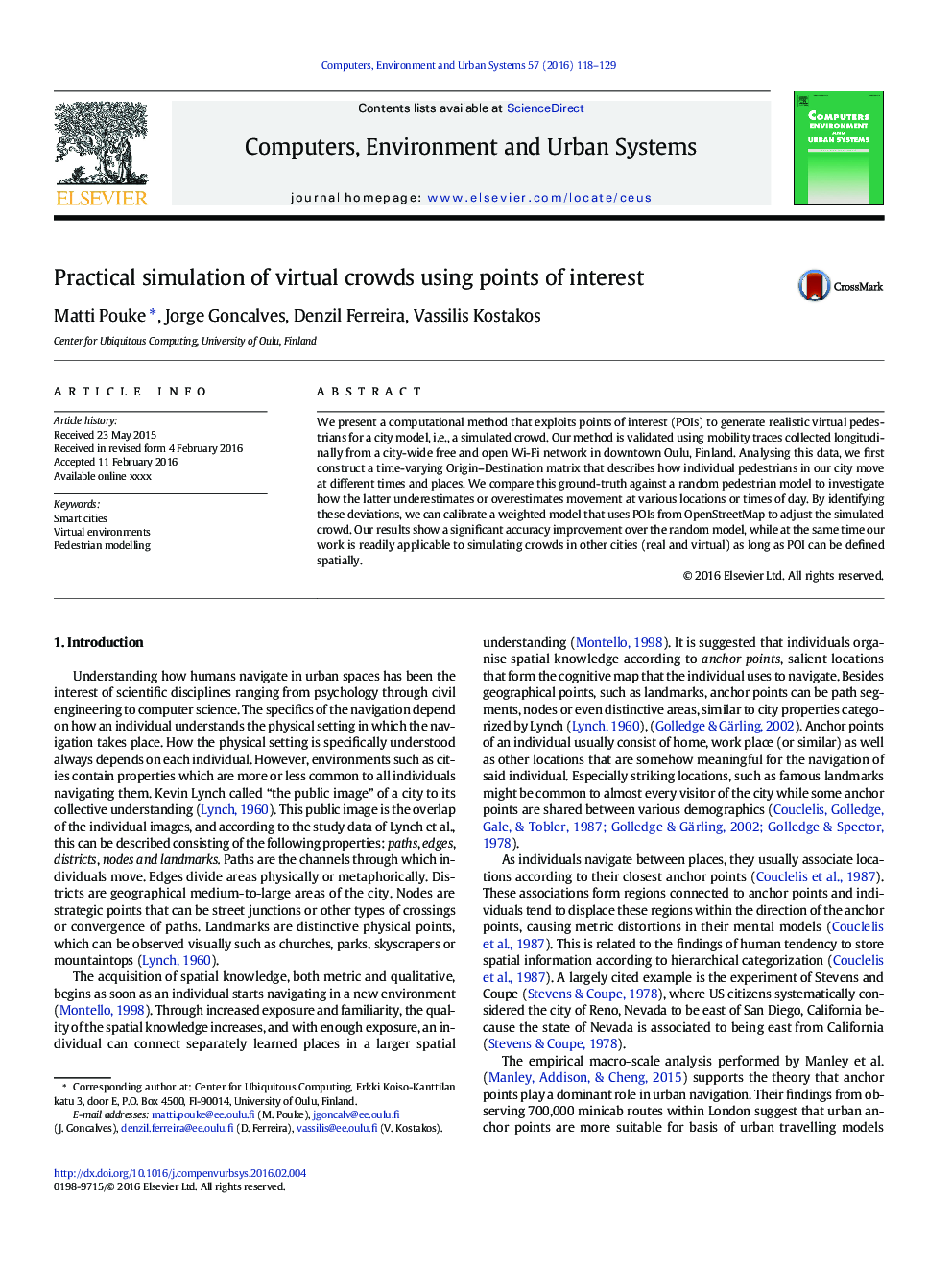| Article ID | Journal | Published Year | Pages | File Type |
|---|---|---|---|---|
| 6921905 | Computers, Environment and Urban Systems | 2016 | 12 Pages |
Abstract
We present a computational method that exploits points of interest (POIs) to generate realistic virtual pedestrians for a city model, i.e., a simulated crowd. Our method is validated using mobility traces collected longitudinally from a city-wide free and open Wi-Fi network in downtown Oulu, Finland. Analysing this data, we first construct a time-varying Origin-Destination matrix that describes how individual pedestrians in our city move at different times and places. We compare this ground-truth against a random pedestrian model to investigate how the latter underestimates or overestimates movement at various locations or times of day. By identifying these deviations, we can calibrate a weighted model that uses POIs from OpenStreetMap to adjust the simulated crowd. Our results show a significant accuracy improvement over the random model, while at the same time our work is readily applicable to simulating crowds in other cities (real and virtual) as long as POI can be defined spatially.
Keywords
Related Topics
Physical Sciences and Engineering
Computer Science
Computer Science Applications
Authors
Matti Pouke, Jorge Goncalves, Denzil Ferreira, Vassilis Kostakos,
